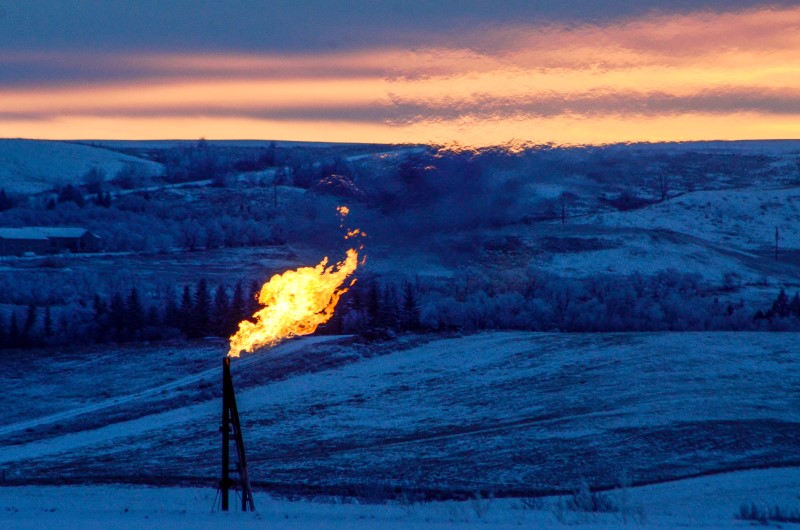Investing.com - Natural gas futures started the week on a downbeat note on Monday, as traders reacted to bearish weather forecasts for most parts of the United States over the next two weeks, that should lead to a dip in heating demand.
Gas futures often reach a seasonal low in October, when mild weather weakens demand, before recovering in the winter, when heating-fuel use peaks.
The heating season from November through March is the peak demand period for U.S. gas consumption.
U.S. natural gas futures shed half a cent, or around 0.2%, to $2.958 per million British thermal units by 8:50AM ET (1250GMT).
Futures lost about 5.6% last week as bearish speculators bet that forecasts for warmer weather over the next two weeks will reduce demand for the heating fuel.
Market participants looked ahead to this week's storage data due on Thursday, which is expected to show a build in a range between 60 and 70 billion cubic feet (bcf) in the week ended October 27.
That compares with a gain of 64 bcf in the preceding week, a build of 54 bcf a year earlier and a five-year average rise of 60 bcf.
Total natural gas in storage currently stands at 3.710 trillion cubic feet (tcf), according to the U.S. Energy Information Administration. That figure is 189 bcf, or around 4.8%, lower than levels at this time a year ago and 46 bcf, or roughly 1.2%, below the five-year average for this time of year.
Analysts estimated the amount of gas in storage would end the April-October injection season at 3.8 tcf due primarily to higher liquefied natural gas shipments abroad. That would fall short of the year-earlier record of 4.0 tcf and the five-year average of 3.9 tcf.
